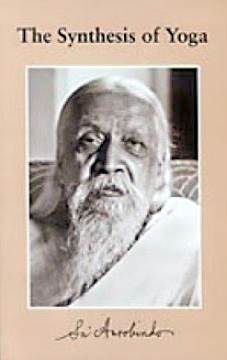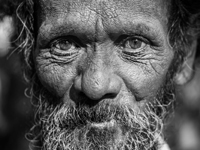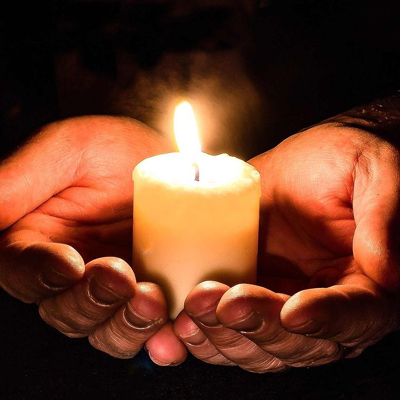Consciousness and health
Beholding our dark shadows
Abstract
Any spiritual practice or self-growth endeavour involves coming to terms with our own share of darkness, emotional pain, trauma and the many ways we unconsciously sabotage our growth possibilities. According to Jungian psychology, each one of us has a part personality in our unconscious which Jung called the ‘shadow’, that is everything about us which is unpleasant or painful to emotionally integrate. To integrate the shadow, however, is not only important but also extremely enriching because it makes us more authentic, whole, integrated and sensitive, as well as it frees up founts of repressed energies and saves us from stagnation. This article also looks at some aspects of the shadow through the help of a dream.
Man’s house of life holds not the gods alone:
There are occult Shadows, there are tenebrous Powers,
Inhabitants of life’s ominous nether rooms,
A shadowy world’s stupendous denizens.
A careless guardian of his nature’s powers,
Man harbours dangerous forces in his house.
The Titan and the Fury and the Djinn
Lie bound in the subconscient’s cavern pit
And the Beast grovels in his antre den:
Dire mutterings rise and murmur in their drowse (1).”
When we speak of spirituality or yoga, images of peace, light, bliss, health, unity, oneness, etc. pop up in our heads. Indeed, these are our ultimate hope and aspirations of undertaking sādhanā and are even experienced intermittently. But expecting that this is all we are made of is setting ourselves up for immense disappointment. There is another realm of existence within all of us which also greets us, and lives through us. In fact, since Sri Aurobindo tells us that all life is Yoga, we can be sure that irrespective of engaging in a conscious sādhanā or not, every human being is obliged to encounter amazing, uplifting states as well as uncomfortable, shocking, horrible aspects too.
The shadow lies within all of us
In The Synthesis of Yoga, Sri Aurobindo writes:
“The practice of Yoga brings us face to face with the extraordinary complexity of our own being, the stimulating but also embarrassing multiplicity of our personality, the rich endless confusion of Nature… as soon as we go deep within ourselves, — and Yoga means a plunge into all the multiple profundities of the soul, — we find ourselves subjectively surrounded by a whole complex world which we have to know and to conquer (2).”
The present article is an attempt to articulate one such realm of our inner selves, those parts of us which we remain unconscious of till they make their appearance either in dreams, or difficult mood states, or any such behaviour which stun us, surprise us and which are quite unlike how we usually behave. It is quite interesting that in the above lines from Savitri, Sri Aurobindo uses the term, ‘shadow’ to create an image of something which stays in the dark, whose form and structure we somehow cannot see, and which is the opposite of light, opposite but always its companion.
The same word was used by Carl Jung, one of the most prominent Western psychologists of the last century, who was born and lived around the same time as Sri Aurobindo and the Mother, and whose insights into human nature probably come closest to Eastern spirituality.
He conceptualised shadow as that part of our psyche, unconscious to us, which remains so because it is rather unacceptable to us due to reasons of social adaptation. The shadow part of us is composed of all that which is repressed for the sake of feeling safe, gaining social acceptance, winning friends, forming romantic relationships, living a morally sound life, and ensuring that we don’t ‘disturb’ the status quo in the family or the larger community. In other words, the shadow part of us is everything which comes in the way of achieving our ideals.
In fact this process of repression begins very early on in our lives, as infants, even before our capacity for language and words. It is a natural process of our psyches, phenomena which no human being can escape, which keeps pushing all these aspects of us ‘down below’ where they simply wait their time, and keep making their presence felt in unpleasant emotional states (a vague depression or sadness, simmering discontent, feeling meaningless, loneliness, feeling inauthentic, frustrated, anger, jealousies, feeling lost, stagnant, feeling like we are not living up to our full potential, etc.).
The shadow part of our make-up is not only composed of unpleasant or morally wrong aspects, but at the same time, it houses also our unique aspects which as infants and children we often repress for the sake of mixing in with the family or school peers. For instance, a genuinely bright girl whose questions and observations are felt as embarrassing or challenging to her parents and who is shamed for being ‘rude’ and ‘a bad girl who doesn’t trust her parents’ will develop ambivalent feelings towards her original ideas and way of thinking. Such a person while growing up may always try to ensure she is not upsetting the status quo of her classroom or the boardroom, and thus her originality keeps simmering just beneath the surface. If she keeps downplaying her talents, such a person may feel increasingly frustrated, stifled and irritable. If she can finally begin to understand the roots of why she feels unsure about voicing her honest opinions and emotionally assimilate that she is not that 4-year-old girl any more, whose originality will cause her to lose her parents’ affection, she may then begin to start giving space to this repressed part of her. No doubt that any change disturbs the existing equilibrium around, and perhaps her ‘newly-found’ assertiveness will cause frictions between her and her colleagues and even her spouse. But it is a choice she will have to make between changing something or letting the slow but sure frustration within her to eat her.
Assimilating the shadow is a challenging but enriching process
An experientially significant ‘gift’ of our shadow is that it contains a huge amount of repressed psychic energy within it. So working with our shadow is intuitively felt to be the right way, even though everything in our nature wants to run away from it because everything unfamiliar is also scary. Jung has said that working with the shadow part calls for a tremendous moral strength, for it requires an immense courage to face our own darkness and take full responsibility for it, work through our emotional wounds and traumas so that, once becoming conscious of them, we can free them of the sharpness and terror they contain. It requires us to step into unfamiliar spaces in us, ask uncomfortable questions, question our upbringing, the various ways we have been wounded, neglected, sometimes even abused by those whom we had implicitly trusted. It also involves seeing how we have caused wounding to our own selves in the process of navigating through life, and how the ultimate responsibility of our fate lies in us, and not in our parents, or community, or religion. Further, it challenges us to accept our own actions and traits which we ‘prefer’ to see in others but never in us
In fact, it is again one of the golden rules of our psyche’s functioning that the kind of people we cannot tolerate and who invite our intense dislike, disapproval, even downright condemnation, have the same traits that hide in our own depths and we embody them without our awareness. In fact the Mother has pointed this out many times when she says that what we dislike the most in others are the same traits that lie within us. Working and assimilating our shadow within our self-concept is a life-long work, and interminable. Any time we are seduced to believe that we have no shadow any more, it is then that we are most unconscious of it and thus most vulnerable to its disruptive influence.
As mentioned above, shadow is what is in darkness, in the unconscious, out of our conscious sight and it contains significant psychic energy within it. The need to ‘unlock’ and begin to relate to our shadow parts is precisely to free up these energies which then help us towards our growth and putting us on the road of an authentic living, where we are neither ‘superior’ to our fellow men and women nor ‘inferior’, but potentially share all their virtues and vices and yet experience our self and life from our own unique individuality. Working with the shadow also is a truly humbling process, because time and time again we come face to face with exactly those qualities in us which are so easy (and also fun) to find in others and condemn them for it, make scapegoats out of people while conveniently ‘living in our castles built in thin air’.
The shadow makes us whole because it keeps us embodied
The shadow is like that tough teacher who keeps noting down our own weaknesses, moral failures, hypocrisies, as well as bright spots and strengths which we would rather not see. It is like that small child in the fairy tale who cried out in front of the common folks, “The emperor is naked”, where we are the emperors. It is like the wise old man who looks straight into our eyes with a strange smile on his lips, looking right through us while we are giving an ‘honest’ description of ‘who we really are’. And when we keep ignoring its calls, it is also that wild beast who runs towards us in our nightmares to ‘shake us up’ and finally take note of all the wild instincts simmering within but which we simply won’t acknowledge. The shadow uses many ways of reaching out to us, because it wishes to be integrated and be made conscious, to whatever extent possible, and to make us more whole and integrated.
To closely observe ourselves when we find ourselves disliking someone or certain habits and traits we find intolerable can be an entry point into our own recesses. In addition to such projections, our dreams too can bring us in touch with our shadow aspects which call for integration and gives us a more balanced personality.
Let us look at an example of such a dream:
“I am in a room. From behind me some dry leaves are blowing towards me. It seems like someone from behind is trying to draw my attention. Initially I am not scared but after some time I start getting scared that maybe it is some spirit. With a little courage, I ask “Who is there?” Then a girl came and stood in front of me. She was roughly my age, but she was wearing torn clothes, looked really poor, like a beggar. She came and sat near me. Her face was soiled, as if she had not bathed for days. Absolutely poor and miserable. She looked really miserable. I asked her, “From where have you come?” She mentioned the name of a place, near Delhi, something like Ferozabad. Then I looked into her eyes and asked suspiciously, “Really?” She had brown eyes, you know, like those of a person who is clever, cunning. I did tell her though that she should take a bath, and some food shall be given to her.”
The dreamer’s association with the girl was that her state of being poor and miserable was emotionally similar to how she felt while growing up. While being financially comfortable, though not rich, her parents, especially her father, was rather strict and made his children make do with meagre resources like simple clothes, keeping a ‘tight hand on money’. This feeling of deprivation, living in her psyche all these years, took the form of a beggar-like girl who finally made a contact with our dreamer in order to be fed and washed properly, symbolically showing a need of her repressed deprived part to finally be given what she needs. The dream further brought back memories of how strict her father had been with her and her sibling, and often beat her first without explaining why. The anger and hurt entangled in this symbolic deprived girl caused a deep sense of loneliness to the dreamer. How much her self-image had been damaged by this aspect of her childhood it was only becoming vaguely apparent to her now. In the dream, however, she is able to overcome her suspicion of this girl and offers her sympathy and provides her what she needs, thus hinting at her potential to bring to her own wounded parts that which she did not receive from her father: succour and empathy.
Since the shadow is intrinsically those parts of us which we dislike, it often takes the face or form of those in our outer life about whom we have conflicting feelings or outright hate. Our dreamer described this girl as belonging to a place like Ferozabad, thus hinting at a possible Muslim identity of this girl, also her brown eyes inviting her suspicion towards her. All societies have groups and communities which tend to oppose each other and are inclined to see them as the reason for all troubles, thus very suitable targets for shadow projections. The black/white divide in the United States, or the Shia/Sunni, Muslim/Jew divide in the Middle-East, or the Hindu/Muslim divide in the Indian subcontinent are some such divisions. Our dreamer too has a certain unfavourable opinion of Muslims and thus the shadow appeared as a poor destitute Muslim girl (within her). Trying to connect with the girl as well as the emotions which this dream experience evoked in her would possibly help her to own the destitute needy girl within her. At the same time we realise the humbling fact that the ‘other’ is always different and more than our prejudices or stereotypes. The other community is also made of individuals who have layers in them, and are as complex people as we are. Carl Jung once wrote, “One does not become enlightened by imagining figures of light, but by making the darkness conscious (3).”
Making our peace with our shadows is a life-long process, but one that makes us more real, more humble and in touch with our vulnerabilities. It grounds us into our own bodies and makes us aware that we are mortal beings whose time on Earth is limited, that there is no fault we can never commit, that there is no experience, no matter how painful, we cannot live with. It is only this real humility that makes the presence of the Divine more close, for it is only when we are on our knees (symbolically) in the face of the darkness within, that Her Grace can enter our wounds where we ache the most.
References
1. Sri Aurobindo. Birth Centenary Library, Volume 29. Pondicherry: Sri Aurobindo Ashram Trust; 1970, p. 480.
2. Sri Aurobindo. SABCL, Volume 20; 1970, pp. 68-69.
3. Jung CG. The Collected Works of Carl Jung, Volume 13. Princeton NJ: Princeton University Press; 1967, p. 253.
Poorva Sharma is a psychology student based in Delhi.
Share with us (Comments,contributions,opinions)
When reproducing this feature, please credit NAMAH,and give the byline. Please send us cuttings.






